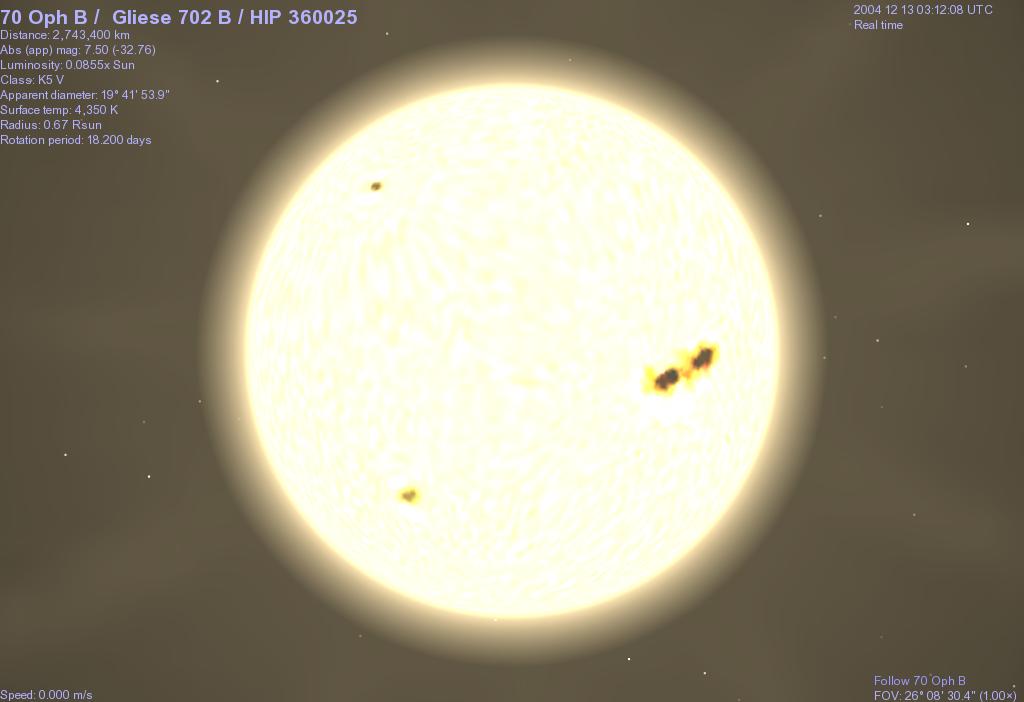
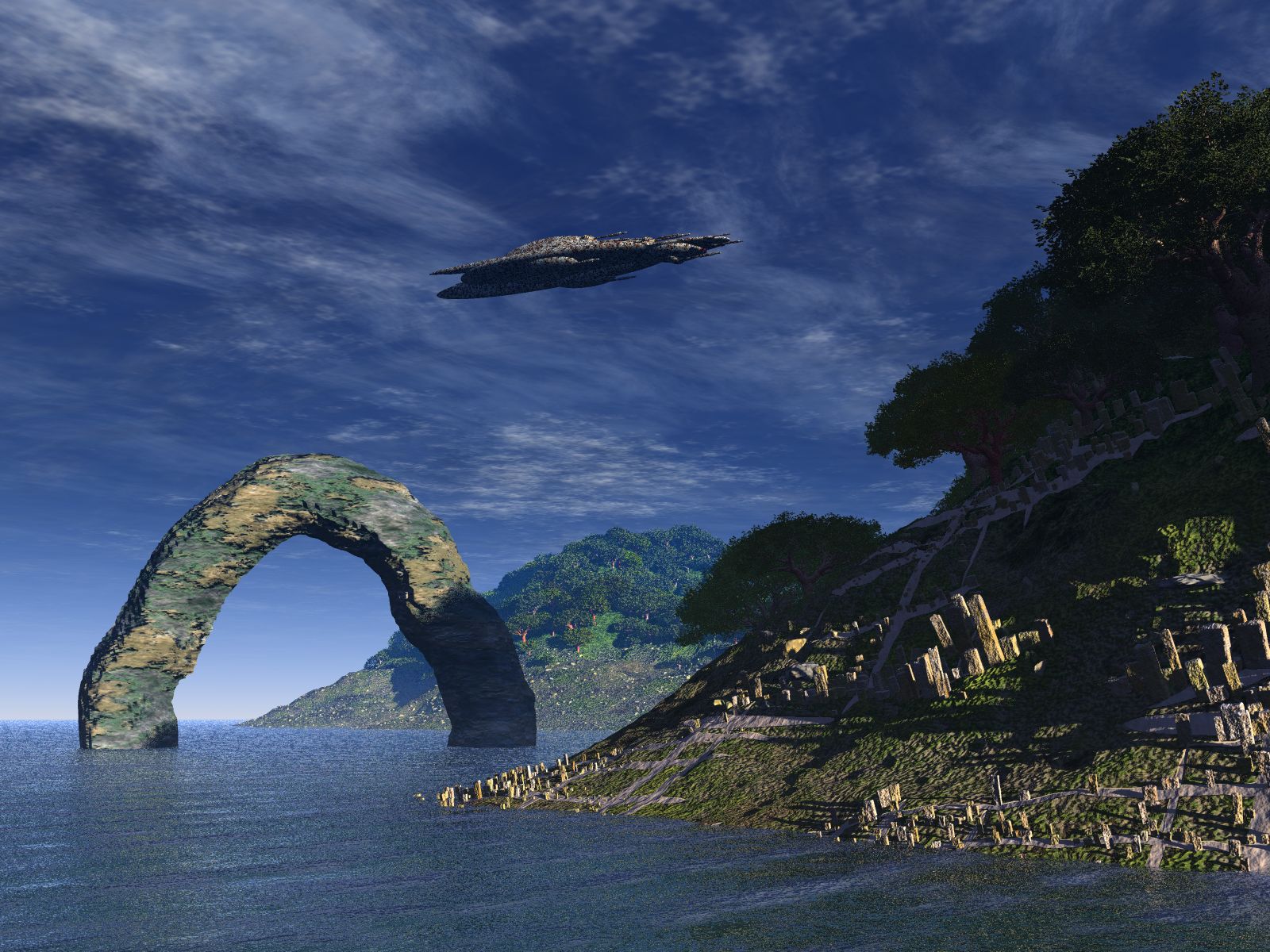
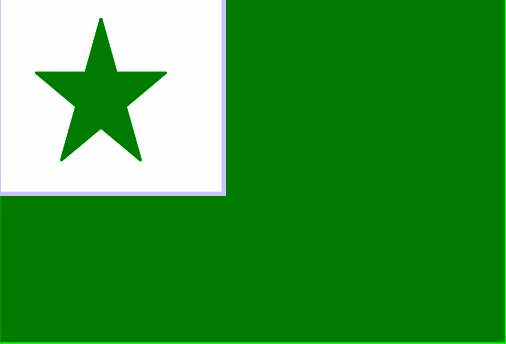
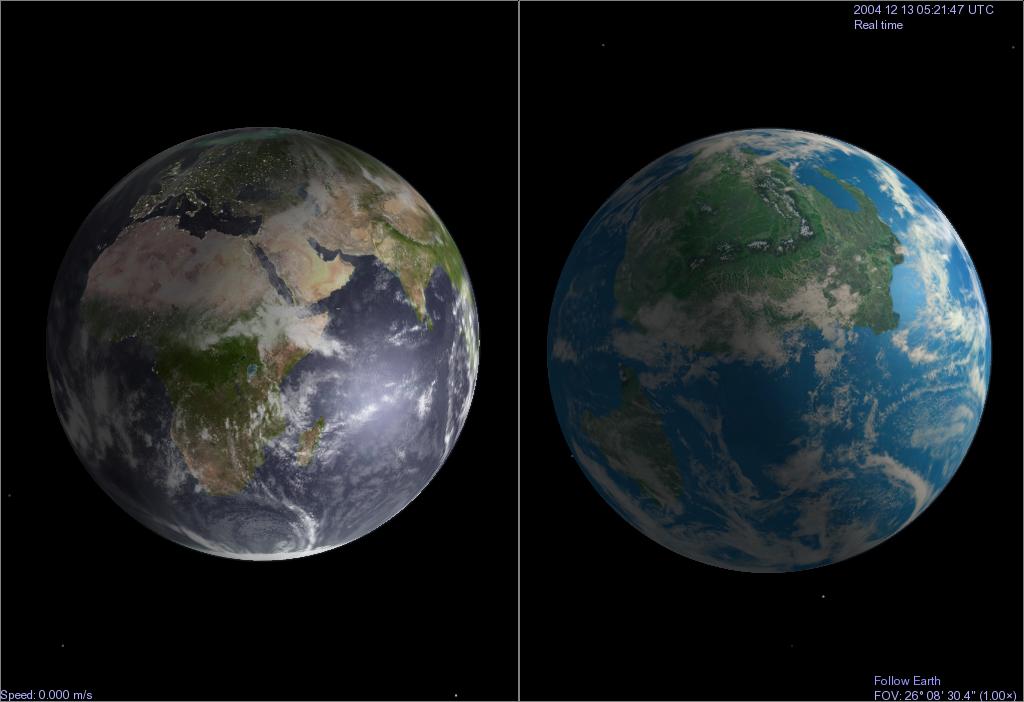
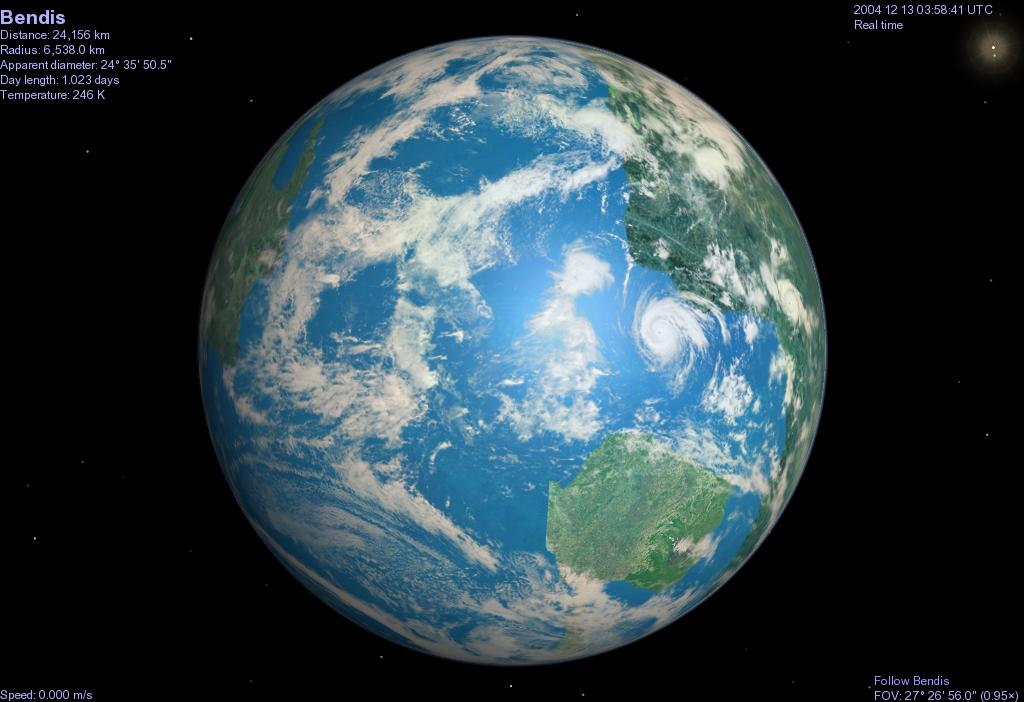
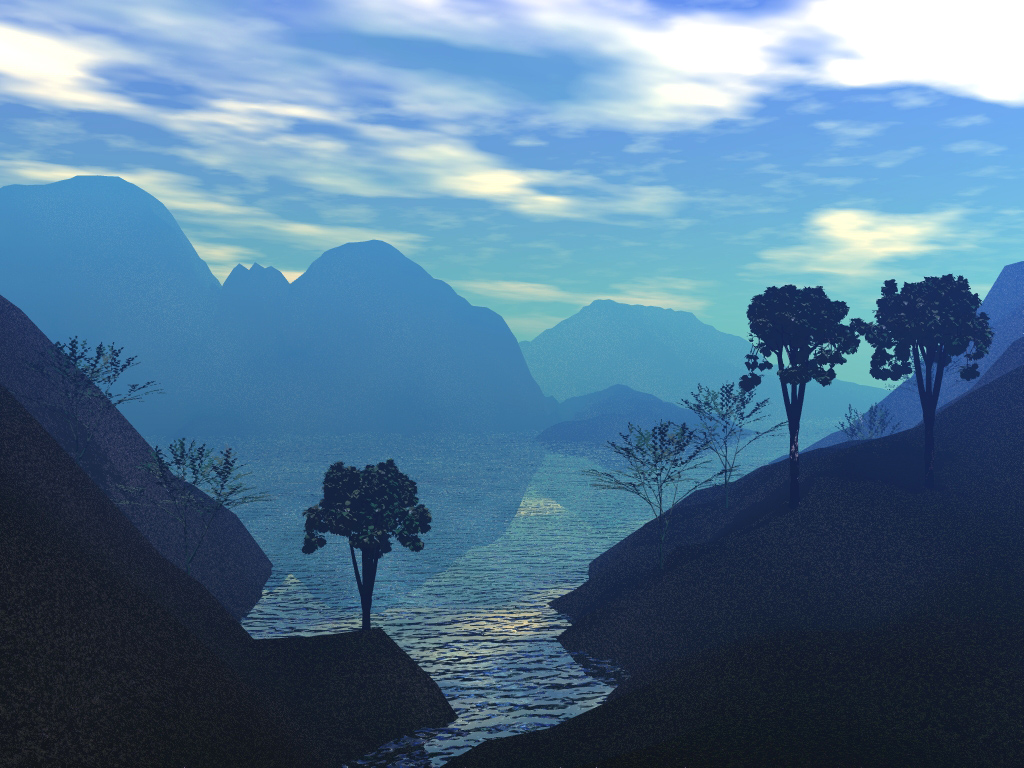
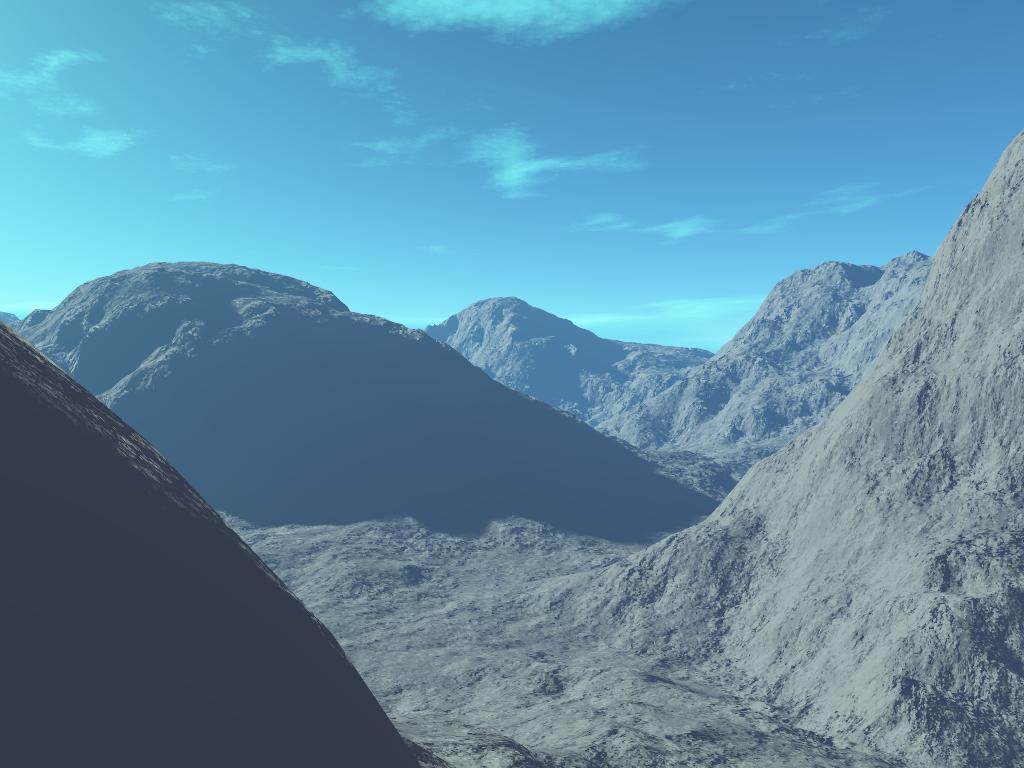
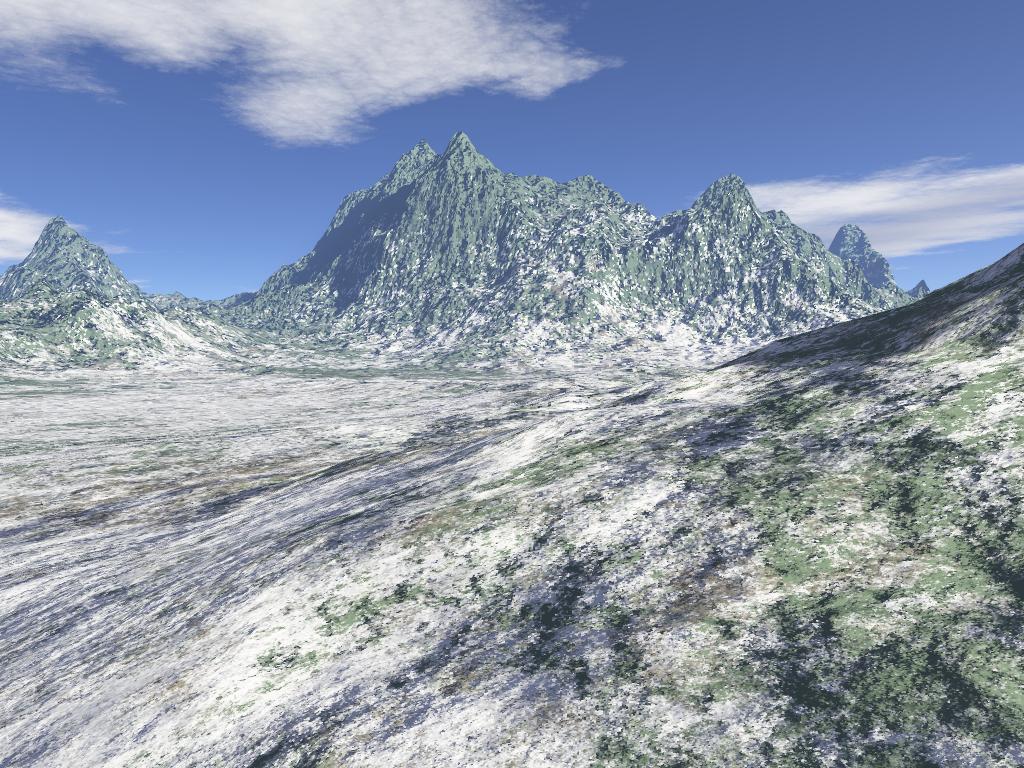
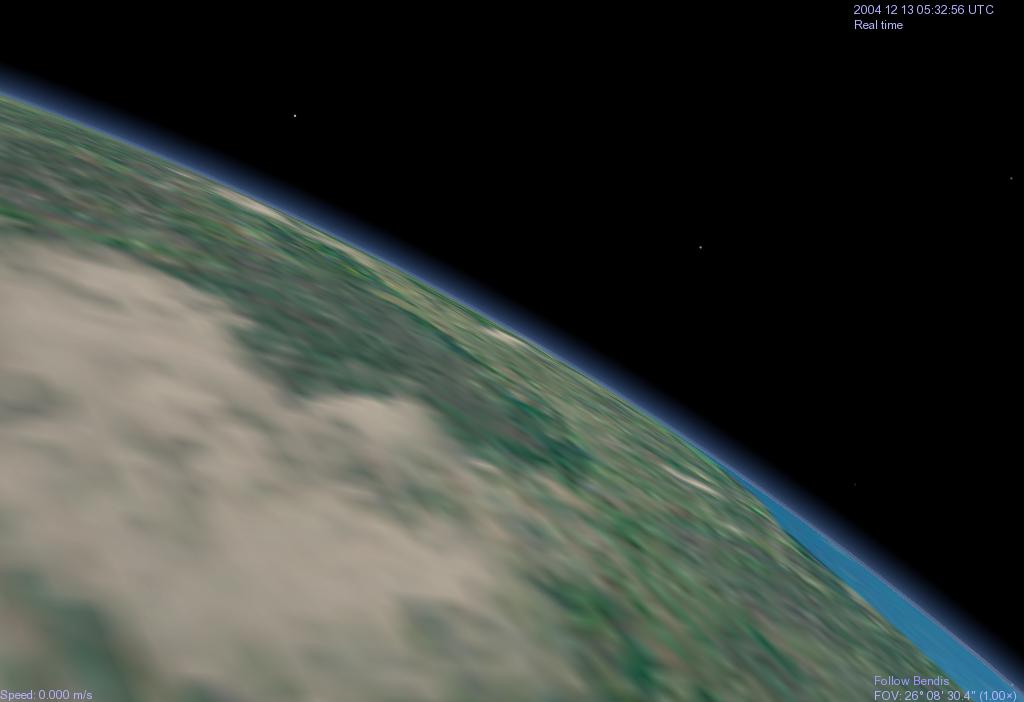
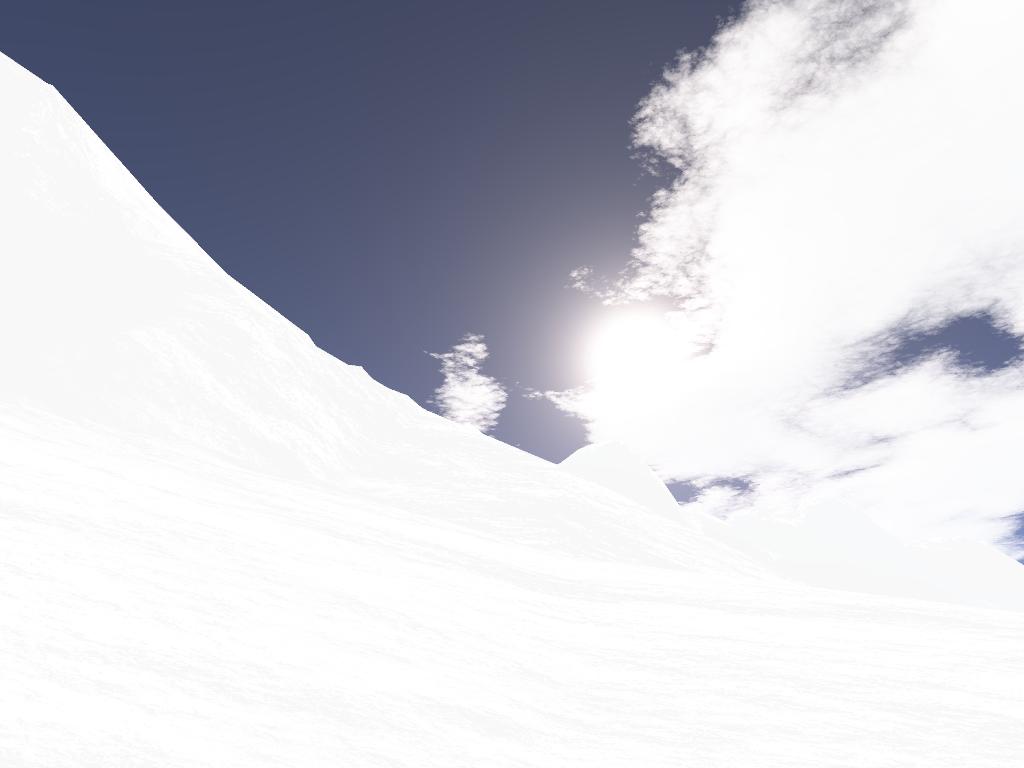
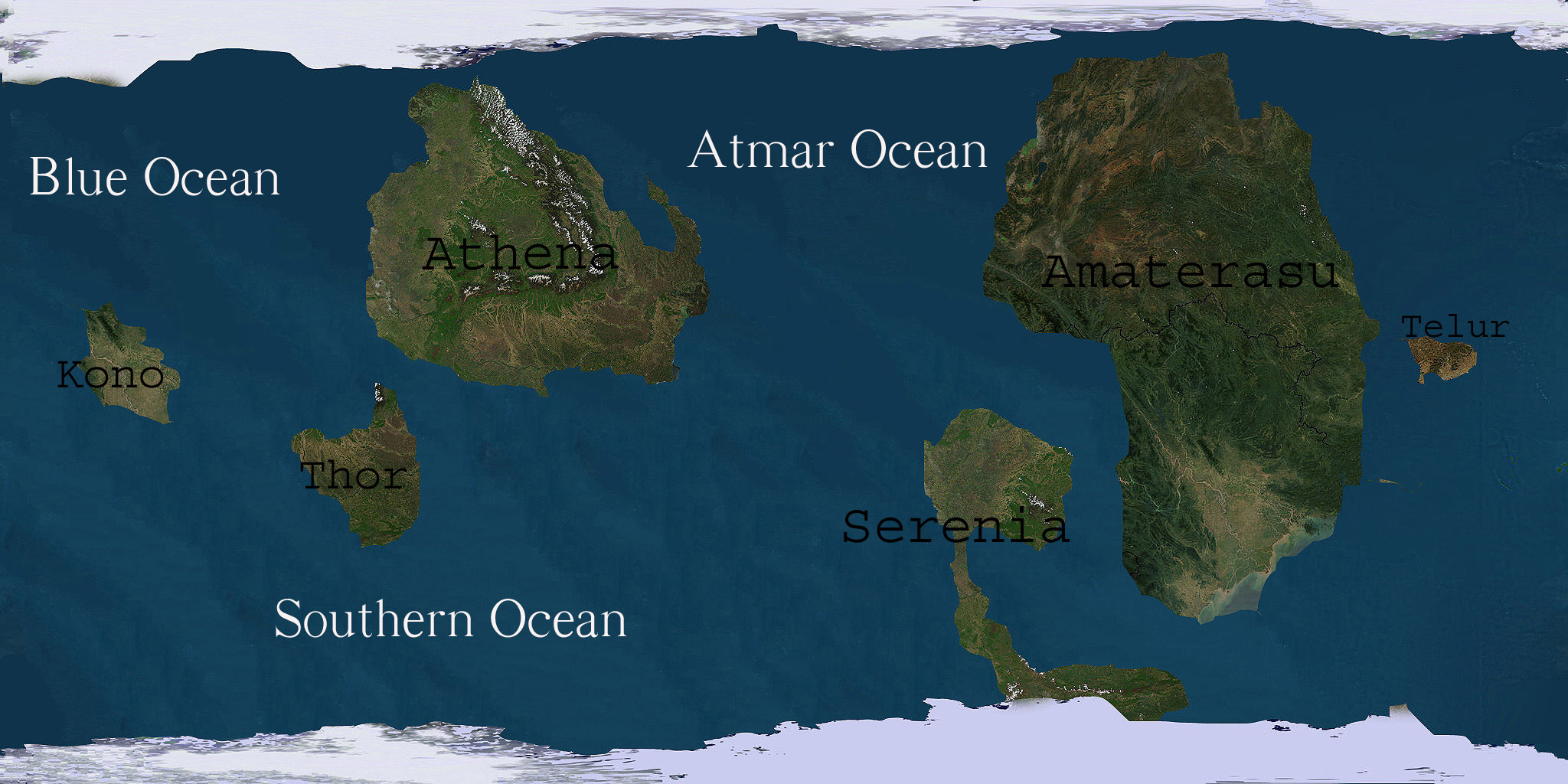
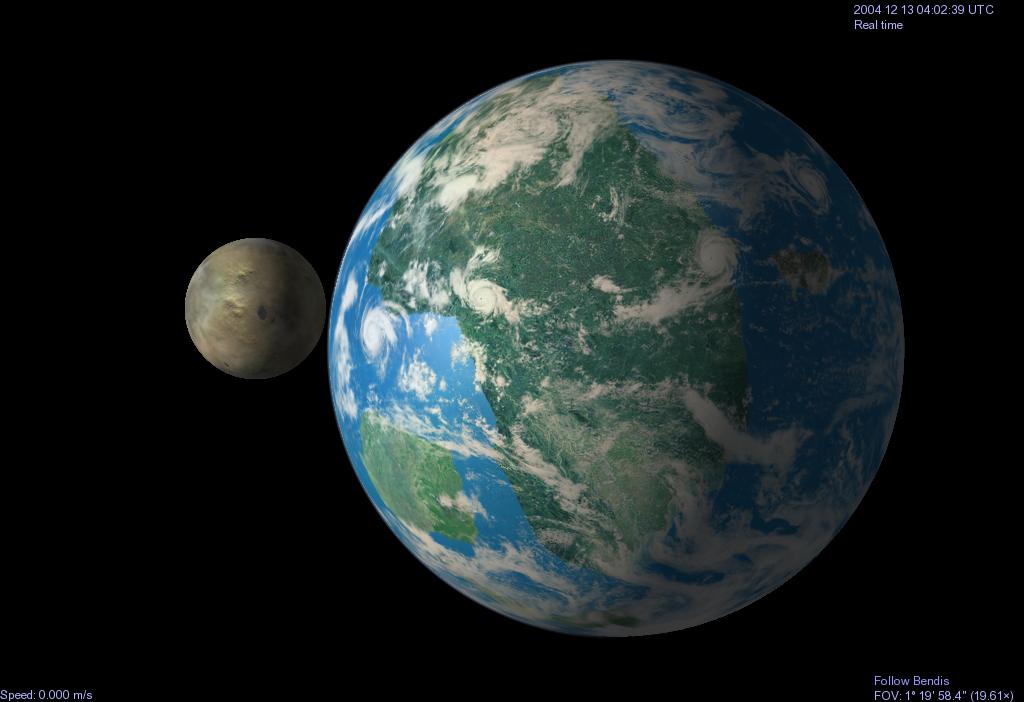
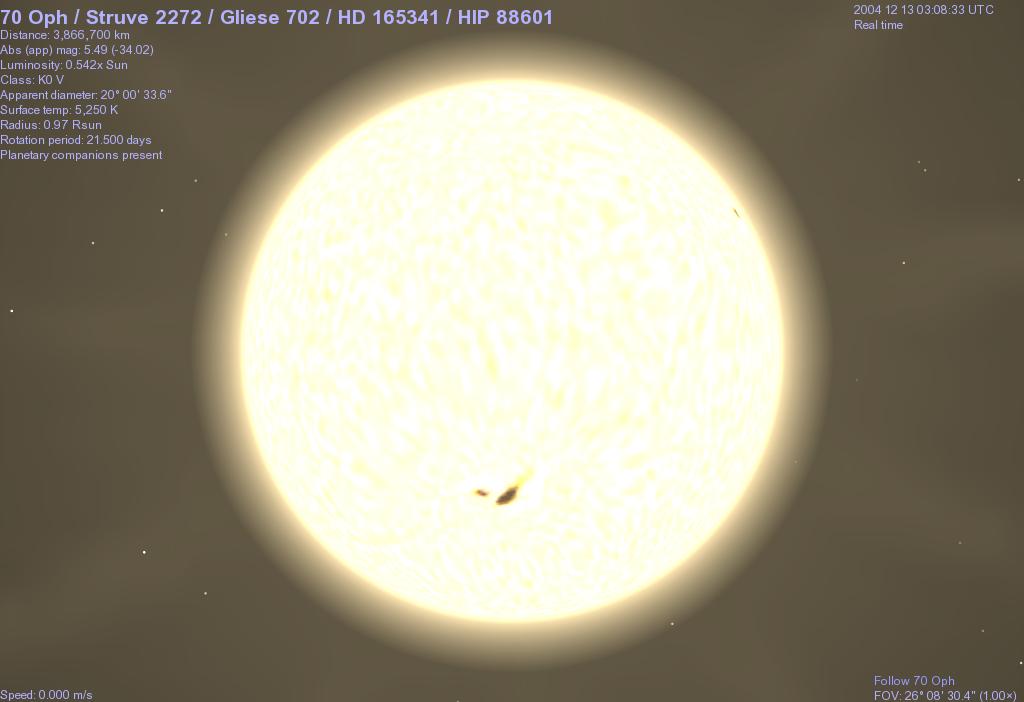 The Bendis Project is connected
with my new social fiction world called Bendis.
The Bendis Project is connected
with my new social fiction world called Bendis.
The worlds were (so far) created with Celestia and Terragen .
This area is still
under construction, please come back latter to check out
the news. A version in
Esperanto can be read by
clicking on the flag on the right.
Last update: Sunday, August 7, 2005
Bendis is the third planet from the Zephyr solar system.
It is a Terran type world,
slightly bigger than the Earth
(has a radius of 6538 km) as it can be seen in the
right
comparative figure. As its mas is 1.02 Earth
masses,
(but the radius is bigger) the gravity on the surface
is
0.971 of
the Earth.
An animated image of
the planet can be downloaded herehere
(3.98 mb in size).
General astronomical data:
Zephyr (the image
above) is 15.589 light years away from Sol and is
a star of type K0V.
It has a mass of 0.89 solar masses, a luminosity
of 0.52 compared to
Sol and a radius of 0.97. Its surface temperature
is 5250K. The official
name of the star is 70 Oph or
Gliese 702.
With 70 Oph B (called Ephyr), Zephyr forms a binary system.
Ephyr (the second image) is a K5V star, with a mass of
0.71,
a luminosity of 0.085, a radius of 0.67 and surface temperature
of 4350 K.
From the Zephyr referential frame, Ephyr
revolves around
it
in
an interval of 88.4 terrestrial years (117.4 Bendis years),
its
distance varying from 34.8 AU to 11.6 AU.
Ephyr has a high
inclination orbit around Zephyr (59°).
The Zephyr system has 7
planets.
Bendis astronomical
data:
Bendis orbits around
Zephyr at 0.781 AU. Zephyr has about
the same brightness as the Sun on Earth
seen from the planet,
but is 1.3 times bigger. The solar day is 24h33m3.6s,
slightly
longer than for Earth. It has 24 Bendis hours, divided,
similarly
to Earth in minutes and seconds. The Bendis year is shorter
than the terrestrial year, i.e. of 267.211 days or 261.119
Bendis days. In
consequence, the Bendis calendar is different
from the Earth, having 10
months, first 9 of 27 days, the last
of only 18 days (it is a special month
of celebrations). Every
10 years (7.53 Earth years) a day is added (a
special celebration
is held then, called “Zephyr day”), every 50 years
(37.5
Earth
years) a day is also added (“Ephyr Day”) and every 1000 years
(753 Earth years) a day is subtracted (from the first month)
in order to
keep the calendar accurate. The last day of the
shortened 9th month enjoys a very special celebration as
“The Bendis Day”. A new era starts with every Bendis day and
has a proper
name. People on Bendis do no use the typical Earth
"week" as unit of time but
a "nueva", i.e. a nine-day week.
The Bendis calendar changes only every
10 years. Bendis has an
axial
inclination of 23.5°, very similar to Earth, and experiences
seasons. The polar ice caps are smaller than on Earth and a little
warmer. On average, Bendis is warmer than Earth, with the
differences
between Equator and Polar regions smaller. This is
given by the fact that
the atmosphere is denser (1.2 times),
and the air circulation
between poles and equator better.
Bendis has a satellite, Eol, at 410000 km distance,
slightly bigger
than the Earth's moon, experiencing, in consequence, tides,
like
the Earth. In parallel with the normal year, the Ephyr Year
of 88.4
terrestrial years is of particular importance. for half of this
period (44.2
earth years), Ephyr is all the time above one
of Bendis hemispheres. As its typical
brightness is
around a magnitude
of -17.32 (more than 100 times brighter than the full
moon on
Earth), there is enough light for plant
photosynthesis even during
the Zephyr night during the Ephyr summer. There
is never really
night
for years in the polar regions during this season and the area
almost like a temperate climate one during the peak of the ephyrian
summer.
Bendis geological
data:
The planet has 6
main continental blocks, i.e. two big continents
(Athena and
Amaterasu), three small continents (Serenia, Thor
and Kono) and one mini
continent (Telur), with a planet coverage
of around 30%. Unlike in the Earth
case, they were not part
of a super continent in the past but had formed
separately. Still,
Bendis is a geologically active world, with plate
tectonics simillar
to Earth. The relief varies from
gigantic mountains on Athena
(over 12 km high) to vast plains on
Amaterasu. Unlike Earth,
however, just a
small percent of the Bendis surface is made of deserts.
Bendis has
a magnetic field comparable
in strenght with that of
Earth.
First exploration images
The first two automatic probes which landed took several
photos of
the planet, obtaining spectacular images. In order to
avoid damage as well as interaction with the local people, they
landed
in isolated, uninhabitted areas. One of them arrived in
the hostile
northern mountaineous Athena and the other on the
tropical rocky Telur. They
took photographs, got soil samples,
measured the composition of the
atmosphere (72% nitrogen,
27% oxygen nd less than 1%
helium, carbon bioxide and argon),
and spent about one week on their
first landing spot. After that,
they began travelling by air
exploting hundreds of kilometers of
Bedis landscape, with obvious signs of life in their
view.
Bendis weather
The planet has a weather not so different
from Earth, yet more
dynamic and with more powerful
storms across the Oceans. There
is snow in the temperate areas, but
only during the Ephyr winter. The
arctic regions experience snow
even during that period. The polar ice
caps
almost melt
during the Ephyr
summer.
Bendis biosphere:
Bendis has a broader
life diversity than Earth, especially because
many life forms
evolved independently on the different continents.
However, as the
percentage of flying life forms is a little higher,
there are connections
between the continents. The salt concentration
of the oceans is lower
than on Earth, making the water drinkable for
most of the indigenus
species. During the Ephyr Year, dramatic changes
take place on the
planet as an almost explosive plant growth is
experienced in the summer area
and a significant vegeation decline
in the winter, with a cycle of 88.4
terrestrial years. Great (although slow)
animal migrations happen as well,
changing the ecological balance,
sometimes with spectacular effects.
Intelligent life:
The data on intelligent
life are still incomplete concerning the number of intelligent species, yet, a
humanoid species seems to be dominant, having a pre-industrial level
civilization. Yet, unlike the Terrans, they did and do experience more powerful
challenges from other species. This makes the humans less widespread and smaller
in numbers (we estimate a humanoid population of about 80-150 millions to be
living on the whole planet). The next exploration mission will have the
main goal to gather more information and establish an official contact with the
Bendis humanoids and/or the other intelligent species (if they exist). A
cautious, slow approach has been recommended as we still have very limited
knowledge about the indigenous life on this planet.
email
me








 The Bendis Project is connected
with my new social fiction world called Bendis.
The Bendis Project is connected
with my new social fiction world called Bendis.